AAUSAT 6: An Experimental Platform in Space
AAUSAT6, is our sixth student-developed satellite from Aalborg University. As with our previous missions, the primary purpose is education, where we want to elevate students and our members to their highest potential.
To achieve this goal, the satellite bus itself is the payload. It contains multiple software-defined elements that can be reconfigured and updated over the air. This includes critical elements and non-critical systems such as the Camera and Software Defined Radio (SDR). These systems will be able to serve the next generation of students and researchers at AAU, enabling in-orbit experimentation.
- 2U CubeSat spanning 20x10x10cm
- A complete redesign with knowledge from former missions
- Video streaming enabled by DVB-S2 & improved pointing accuracy
- Firmware Image Server enabling over-the-air updates
- An In-orbit experimental platform for UHF & S-band radio
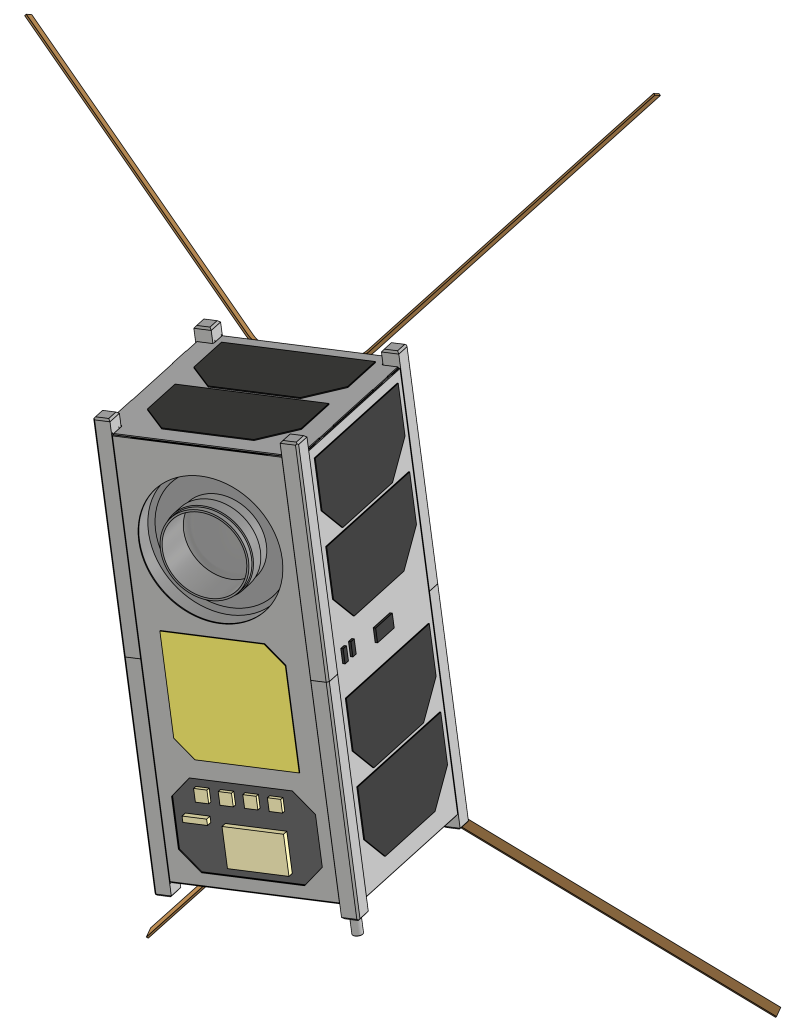
A CubeSat designed entirely by students.
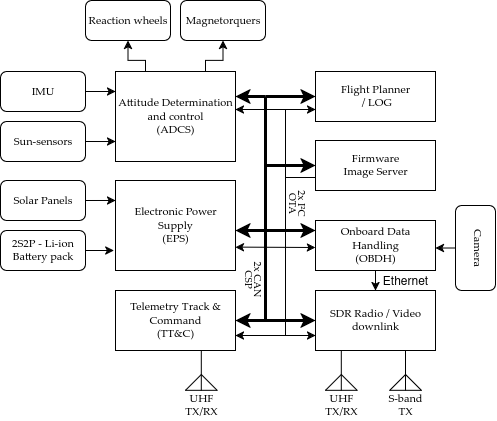
Following our objective of education, we have a mantra of doing everything DIY and in-house at our lab. This entails that every system from satellite-bus to payload has our members’ fingerprints all over it. They are engaged from design, construction, testing and operating the satellite once it reaches orbit.
This gives our students a unique opportunity to learn cooperation and advanced system engineering from hands-on experience.
The mission payload
The first satellite from AAU, AAU Cubesat had the objective of taking an image of Aalborg. This required a camera, active attitude control of the satellite and a radio capable of transmitting the image back to a ground station located at AAU.
While the original mission was a success, no satisfactory images were obtained by the satellite due to limited altitude control. AAUSAT6 hopes to redeem this goal and achieve in-orbit imagery both through stills and live video! The satellite includes onboard processing, allowing students to experiment with image processing and machine learning. This coupled with a versatile SDR-subsystem to evaluate new communication protocols, ensuring the satellites brings value throughout its entire mission duration.
Camera in space
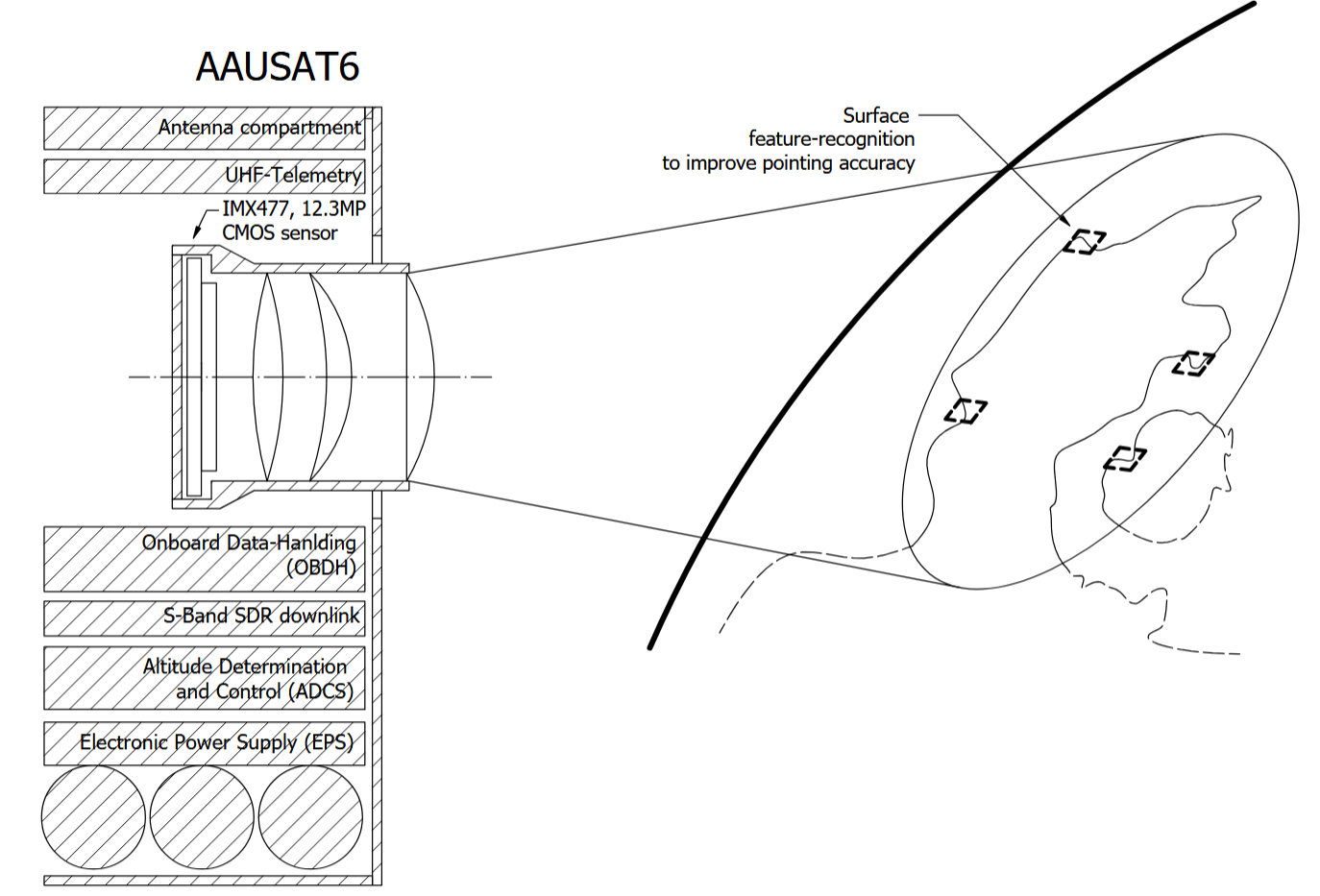
For this mission, the IMX477 camera sensor has been chosen, together with optics capturing Aalborg municipality. The sensor supports streaming of 4K@60fps via the MIPI CSI-2 protocol to the Onboard Data Handling system (OBDH), for onboard processing.
However, the communication chain is designed to support a livestream at 1080p@60fps to the ground station localised at AAU in Aalborg, through the use of the DVB-S2 protocol.
The unused resolution leaves room for digital signal processing, which can include algorithms such as digital zoom, narrowing FoV by intelligently tracking features and improving attitude determination.
Onboard Data Handling
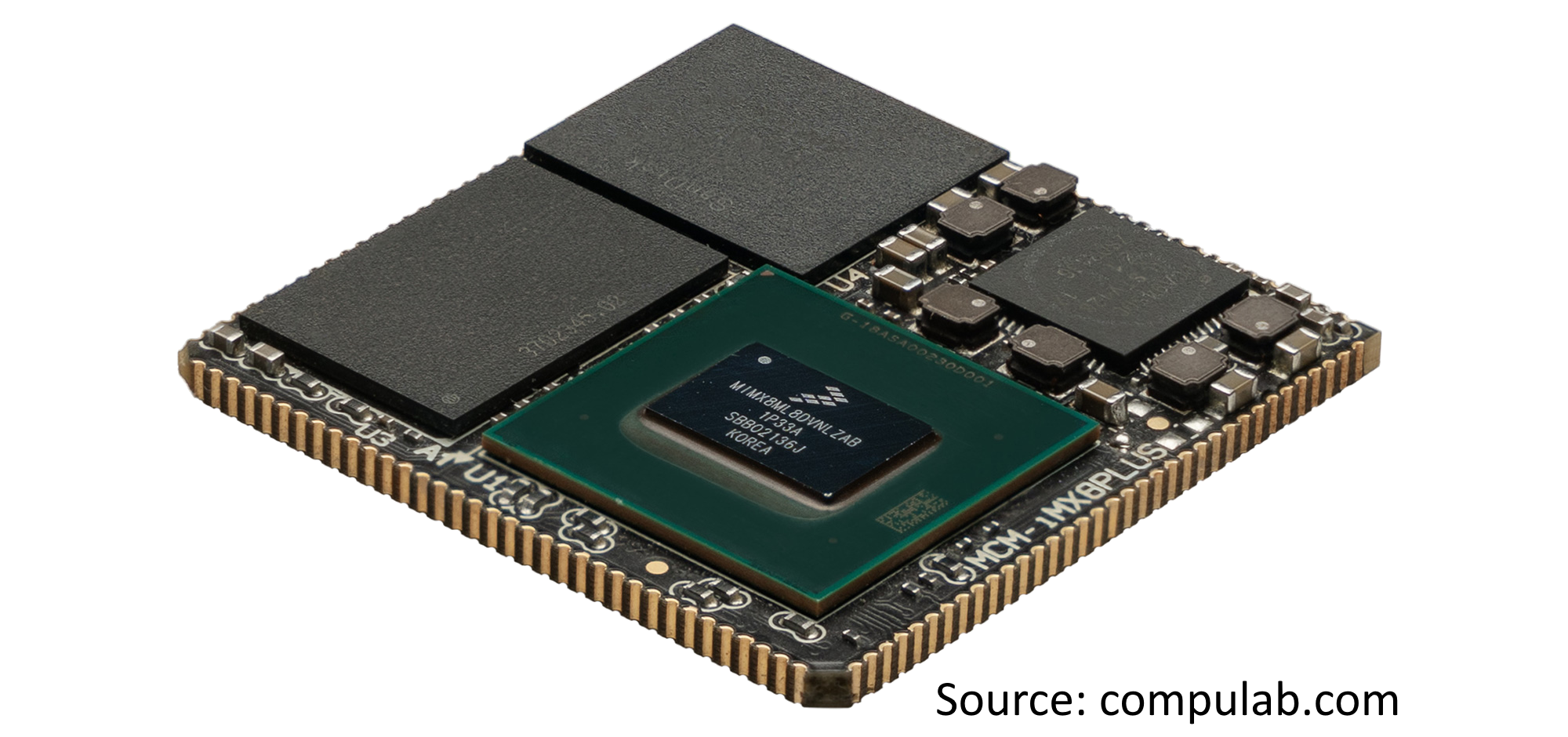
Former AAU Satlab missions consisted of hardware and software, made to serve a primary objective throughout their entire lifetime. This has limited the appeal for the next generation of students to continue using the satellites in their later stages of life, when the mission is finished. AAUSAT6 aims to serve new students and researchers until it fails or decays. It is achieved through its software defined subsystems such as the OBDH.
The OBDH is a non-critical subsystem allowing us to lower the entrance level for running experiments onboard. It runs embedded Linux for high-level code execution and has direct access to the camera feed and sensor data from the whole satellite.
It will serve users as a powerhouse of a centralised computing platform, based on the NXP I.MX 8M Plus System-On-Chip (SoC). This computing unit contains onboard graphics and neural processing capabilities, which make it ideal for machine learning and computer vision applications. Examples could be the previously mentioned image processing and advanced fault detection of the satellite.
The Neural Processing Unit (NPU) can run machine learning models up to 2.3 TOPS. The maximum power consumption is limited to 4.5W when the CPU, GPU and NPU all run at full speed [www.compulab.com].
Software defined radio platform
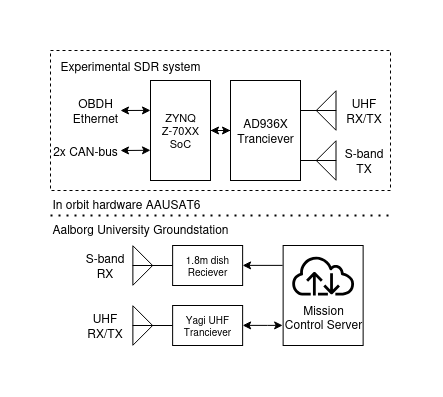
As a supplement to the telemetry track and control (TT&C) link, based on the CC1120 tranceiver, AAUSAT6 features two Software Defined Radio (SDR) channels. The first channel is transmission only in S-band, and will primarily support video downlink. The second channel is a second UHF link that will serve as a development platform for an improved TT&C link. This will allow us to unlock higher speeds, enabling faster code upload, and possibilities of working with live shells.
This consists of the well-tested AD936x transceiver from Analog paired with a Zynq 70xx series FPGA from AMD. This is a similar hardware platform to multiple recognised SDRs from Ettus and the cheaper “adalm-pluto“.
By using a Zynq FPGA, we have two Cortex A9 cores available, which can run embedded Linux, allowing the systems to run standalone.
When not being used by AAU Satlab, the channels will be available for students and researchers at AAU. This could be through semester projects, where students can test protocols with real latency and channel constraints for a LEO satellite.
In orbit experimentation for students
Inspired by initiatives like Astro Pi, a satellite subsystem is dedicated to behave as a sandbox enabling practically anyone to execute their own programs, read sensors & collect data, onboard a “Student Sensor Board”.
The goal of this is to allow students as early as high school level to get a hands-on experience with STEM and the Danish aerospace sector.
